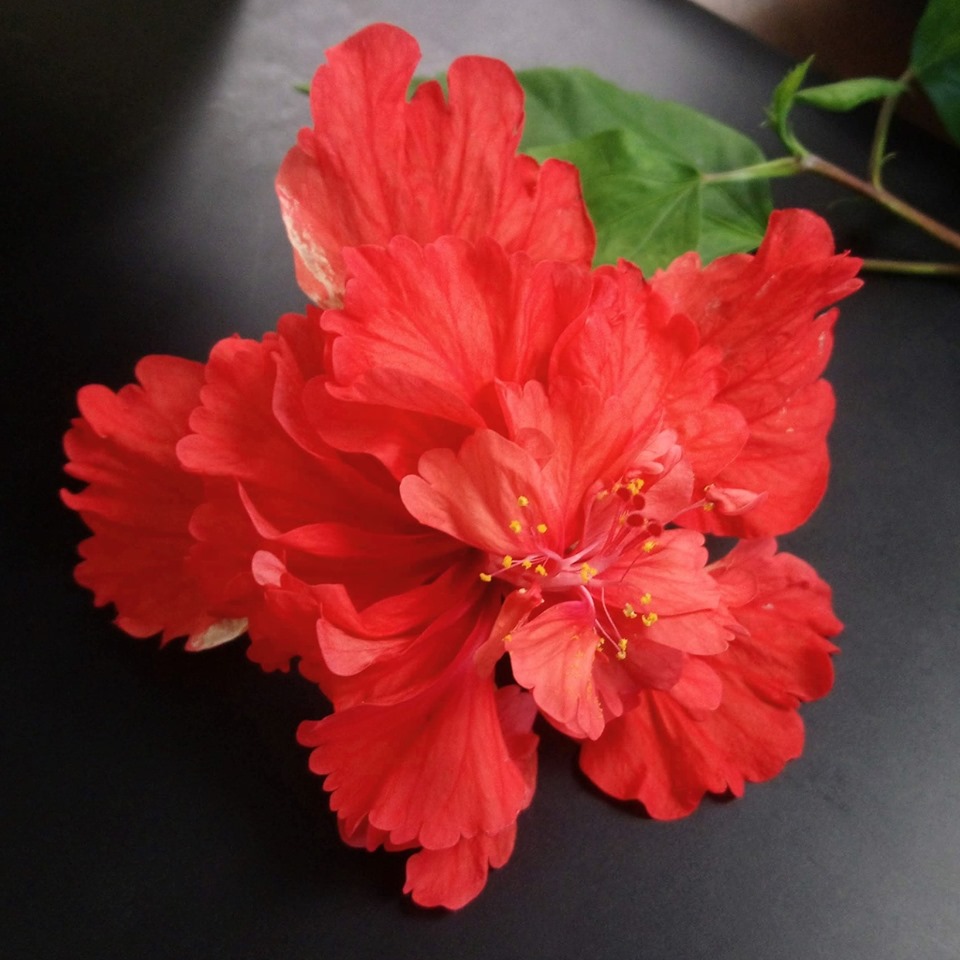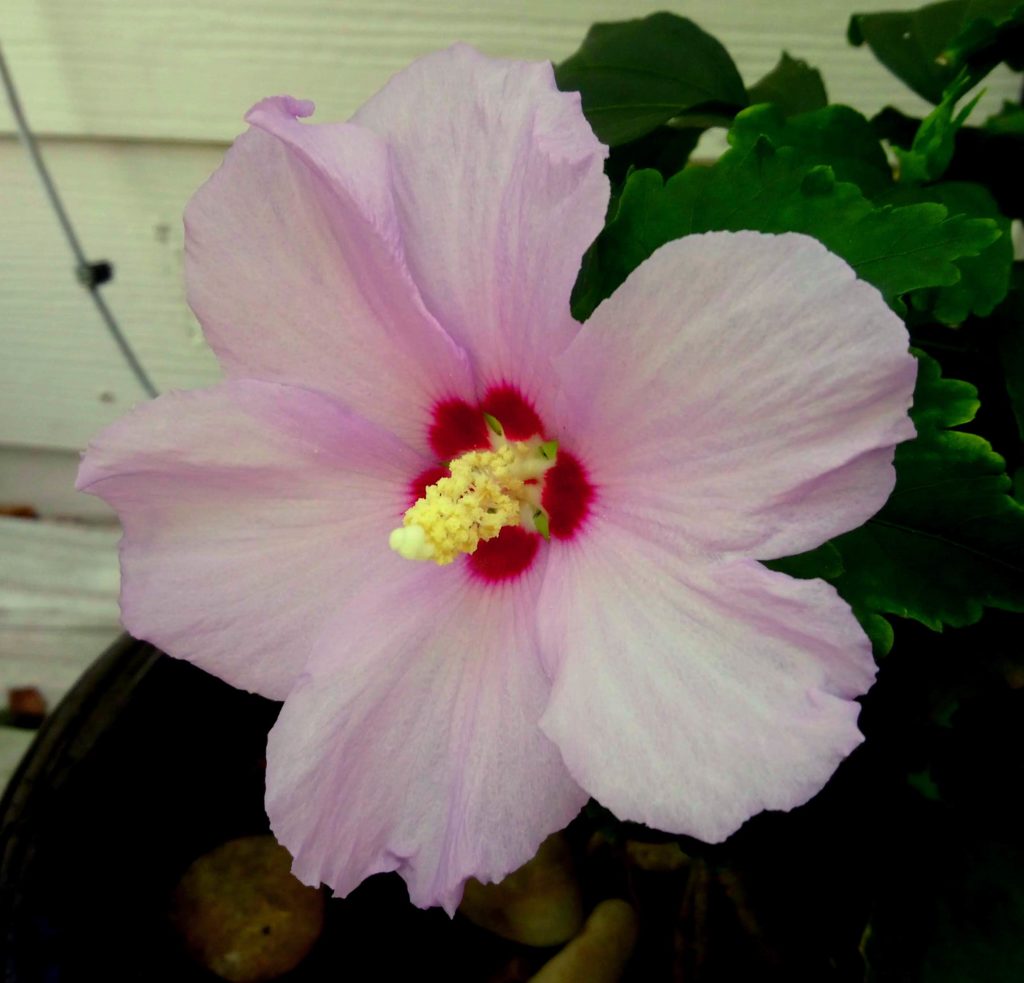A little color always brings focus to a drab and uniform garden. Garden flair can easily be achieved by choosing from a suite of tropical and hardy hybridized hibiscus, stand-out plants that can catch and direct our attention with a variety of colors and flower form. We’ll start this article with a brief introduction to a diverse plant family, and finish with an enticing flourish of hardy hybrid hibiscus varieties.
Hibiscus belongs to the Mallow Family (Malvaceae), plants with global distribution of over 240 genera. The family includes Texas natives Halberd-leaf hibiscus (Hibiscus laevis) and Turk’s cap (Malvaviscus arboreus var. drummondii), as well as plants with economic importance like cotton, okra and cacao. There are several species considered to be tropical hibiscus that have origins in Mauritius, Madagascar, Fiji, Hawaii, and China and India. The majority of modern tropical hibiscus available in retail outlets is typically listed as Hibiscus rosa-sinensis, and there are additional species of note such as H. lilliflorus, H. schizopetalus, H. fragilis, H. storckii, and H. kokio.
Tropical hibiscus are perennial evergreen plants that can be grown in USDA hardiness zones 9 to 11. Even though Brazoria County is rated as zone 9a and coastal areas in 9b, our localized environment can still experience sustained cold or freezing temperatures in winter. You should consider providing protection for them if planted in the ground or keep them in containers for moving in and out of doors. In their native habitat, tropical hibiscus is shrub-like, and often reach to 6-feet in our climate. This plant group grows in well-drained, nutrient rich soils and will thrive with full sun exposure. These plants are somewhat drought tolerant, and like most plants will require seasonal supplemental irrigation. Direct water at soil level keeps foliage dry and reduces foliar pathogens.
Members of this family stand out in a crowd, offering 5-petaled flowers with bold and bright colors centered with prominent reproductive organs that look like a spark on the end of a wand; the pistil extends beyond the floral cup and has many fused stamens along the upper portion of the pistil. Tropical hibiscus most certainly dress up for the floral occasion, having the potential to produce impressive flowers the size of a serving plate. Blooms may appear as a single flower, and some hybrids will offer double rows of petals or be ornate with scalloped edges. An interesting form is a tropical hibiscus referred to as the red poodle flower, or series El Capitolio. An article from the International Hibiscus Society (Vol. 15, No. 3, Issue 64, pp. 11) states that the origin of this variety is from Cuba. There are sports (genetic mutation) from this series that vary in color from peach to yellow to orange.
There is a program at Texas A&M AgriLife Extension and Research Center in Vernon, Texas expanding our hibiscus palette with cold hardy varieties hybridized from native species like Swamp rose mallow (Hibiscus moscheutos). Plant physiologist Dariusz Malinowski and Vernon researchers introduced ‘Blue Angel’ in 2012, one of the first ‘true blue’ hibiscus flowers in a line of hardy hibiscus released commercially. Summer Spice series offers a variety of colors that include introductions ‘Bleu Brulee’ (sky blue with red eye), ‘Plum Flambe’ (light plum color), ‘Grape Sorbet’ (double purple) and more. ‘Crème de la Cocoa’ and ‘Champagne’ were due for release this past spring. You may also consider hibiscus from the Texas Superstar list such as ‘Muy Grande’, 5-feet tall with rose-pink, dinner-plate sized flowers; ‘Lord Baltimore’ with red flowers up to 10-inches in diameter, or ‘Flare’ coming in at 4-feet and fuschia-red blooms.
I encourage you to introduce both tropical and cold hardy hybrid hibiscus to your garden and be the envy of your block. Keep in mind that we have a garden center in Angleton managed by Brazoria County Master Gardeners with a collection of tropical plants, plumerias, roses and more that is open during special events for viewing. Browse to our website for info about upcoming programs: https://brazoria.agrilife.org/, and I look forward to seeing you in the garden.


